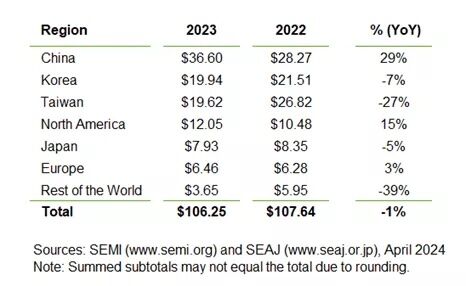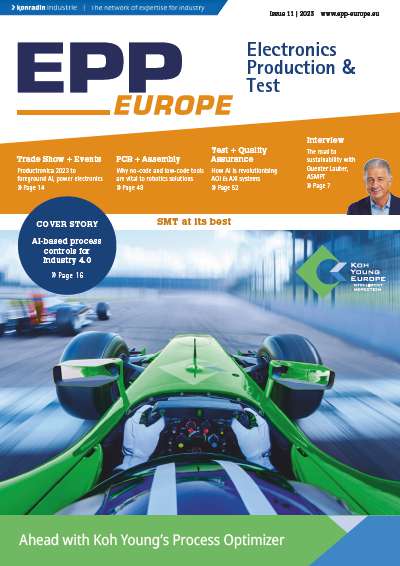Well, this was Munich´s Semicon Europa in the springtime: slow traffic, definitely not overcrowded, and even companies who were so proud – in the past – of not laying-off people now talking about reducing their workforce. The market in Europe (and in other regions of the industrialized world) for semiconductor manufacturing equipment is still down and will probably be flat for the rest of the year. This generally outlines the many opinions and views prevalent.
First, we can toss a short view on plain exhibition figures for the event on the Munich showgrounds: from 2001 (2,489 stands) through to this year with 1,948 booths, there is a small but constant decline to be noted. The most dramatic happened from 2001 to 2002, due to the terrible slowdown in semiconductor and electronics business. So the net expo area has come down as well as primary exhibitors and pre-registered expo visitors – was this year 6,918 (13,088 in the year 2001). Interestingly, the number of co-exhibitors (sharing a booth with primary exhibitors) saves money, has grown to up 986. As we can see, cost-efficiency is, of course, also a pressing issue on the Semicon show ground. Nevertheless, this trade show is the most important for semiconductor materials and equipment in Europe every year because of its clear focus. Semi Europe director Walter Roessger: “this year we even had 70 first-time exhibitors.” So it seems that not all is gloomy, but still in critical conditions.
Coincidence of events
Unfortunately, the Apex in Anaheim/LA took place exactly at the same time as Semicon Europa. The focus of these trade events are surely different, but Apex as an affair for the electronics assembly community is now dealing with subjects traditionally known from the semiconductor processing back-end, such as wafer bumping or packaging topics of all kinds. We can simply put it this way: the back-end of wafer processing is “naturalemente” the front-end of circuit board assembly. Especially certain companies engaged in this area will always have to make a decision: is our presence better at a semiconductor manufacturing or at a board-assembly trade show, or at both with slightly different solutions? Besides this question having to be resolved, we have an abundance of industry fairs in Europe, more or less related to the European semiconductor event. Just a week later we have the traditional Hannover Industry Fair (now cautiously or clumsily dealing with electronics manufacturing and micro mechanics), and, just four weeks later, the SMT/Packaging/Hybrid in Nuremberg/Germany which attracts plenty of visitors from Europe. So, the question for exhibitors and visitors alike in Europe is: where is the right information and solution to be found? Needless to say, the investment in money and time has to pay for everyone.
Under these circumstances, I would dare to say that Semicon Europa has found its solid ground, even in these dire days of an in-between business recession, SARS virus and the war in the Middle East. Moreover, on every showground you will find the kind of people who try to resolve the organizers‘ homework. Hey – why not bring the Semicon Europa together with Productronica or Electronica, respectively? Would this however really be an issue? There are so many pros and cons in this case which cannot sufficiently be balanced. We´d better leave this query to the respective show organizers.
We are not amused
The situation in the semiconductor commerce and its acquainted areas momentarily isn’t encouraging. Semi president Stan Myers, apparently not amused about all these dreary news, presented a number of very sad business figures. For example, rate of equipment utilization has gone from 90% to 80%, despite a slight plus of about 1,7% in semiconductor sales in the year 2002. The market for materials and equipment again has lowered from $54bn to 42bn, and equipment counts for only 19.7bn (but was 47.7bn in the year 2000). The capital expenditure (capex), which was about 30% during the boom, will brood in the corner of 19/20%. On a global scale, capex in Japan and Europe has dropped by 45 to 50%, in North America and Korea by about 30%. But mainland China has gone through untouched with a plus of 22%. The revenue forecasts for semiconductors range, depending on market research firm, between 4 to 23% (see article in EPP Europe #1/2-03, pages 8/16). Of the entire worldwide semiconductor sales, Europe will consume about 20%.
Heinz Kundert, CEO of Unaxis, sees the circumstances with cautious optimism: “the industry is prepared for fast recovery, if it starts one day.” For the move to 300mm wafer size, Johan Harter (senior VP technology development at Infineon) underlines the need to moving for commodity IC manufacturers, because 300mm provides the highest cost-efficiency, but the learning curve will be similarly critical as it was with 200mm. Joel Monnier (corporate VP & director central R&D at STMicrolectronics) on cost reduction: “Of course, ST keeps track on profitability, but we protect our people. It’s not our policy to pursue massive lay-offs.” Helmut Rutterschmidt (managing director of Datacon) also didn’t like this kind of situation, “but we also now have to say adios to about 10% of our staff. We have tried to make it as smooth as possible for everyone, but it’s not an easy task.” So, once again we can put the question: double-digit increase for semiconductor sales is forecasted, but does the rising tide lift all boats? Finally, we can be sure the upturn will have to come, but it’s not going to be all plain sailing.
Gerhard B. Wolski
Share:









